Water Release Curves for Growing Media Ingredients
Water Release Curves , show the water stored in a substance at
various tensions. The water content of a medium at various depths in a container ,should follow the same curves. The
tension is about 1KPa per 10cm (3.94in) of depth (0.1KPa/cm). Water release
curves are used by soil scientists to understand how soils or growing media “hold”
and “give up” water. Growing media can hold and “release” water differently
depending on the type and percentage of ingredients used in the mix. For practical purposes, the amount of water that comes out of
growing media between 0 - 5 kPa pressure is considered easily available to the
plants. The amount of water that comes out between 5 – 10 kPa is still
available but the plant is spending more energy to extract this water. If the
plant has to exert beyond 10 kPa pressure to extract water, it may start
wilting.
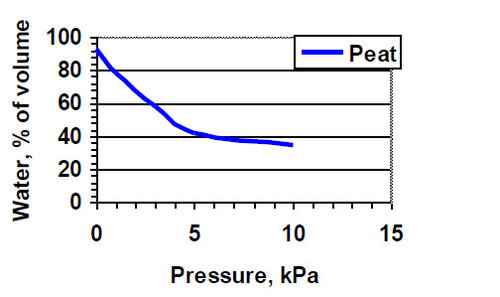
FIGURE
1. Water Release Curve of Sphagnum peat moss. Units are in kiloPascal (kPa)
units of pressure. This data shows that roughly 50% of the water held in a
container is freely available for plant up-take (water release from 0 to 5
kPa). The remainder of the water is more strongly held by the peat and not that
easily available to the plant roots (water above >5 kPa). This is why peat
mixes provide a lot of water for rapid plant growth.
Comments (45)
dale92539 Riverside Co SoCal
Original Author8 years agolast modified: 8 years agoPine Bark
Note: 0KPa is the Saturation condition, all porosity filled with water. Such as the PWT zone. 1KPa is about the tension 4" above the PWT level. Actually 0KPa is at the free water surface level, below this is positive pressure, above this is negative pressure or tension.
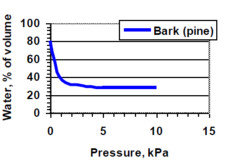
dale92539 Riverside Co SoCal
Original Author8 years agolast modified: 8 years agoPerlite and Vermiculite

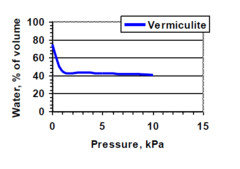
Related Professionals
Brookline Landscape Contractors · El Mirage Landscape Contractors · North Lauderdale Landscape Contractors · Oklahoma City Landscape Contractors · Oviedo Landscape Contractors · Red Oak Landscape Contractors · Annapolis Window Contractors · Minnetonka Window Contractors · Orlando Window Contractors · Sayville Window Contractors · Mineola Window Contractors · Eagle Mountain Fence Contractors · Nampa Fence Contractors · Natick Fence Contractors · Prairieville Fence Contractorsdale92539 Riverside Co SoCal
Original Author8 years agolast modified: 8 years agoTypical UC Mix Peat,Redwood,Sand. Most Potting Soils will follow this curve.
Note that this particular mix can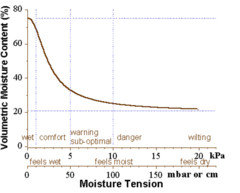
have a water content of 75%. So if we have a one liter(1000 ml) container filled with
this medium, then this can hold 750 ml of water. But note that a significant portion of this (220
ml or 22% of the total volume) is not available to the plant. Thus despite
having a water holding capacity of 75%, this medium can hold 53% available
water (i.e. 75%-22%).Typical Curve
Edit: Breakdown of Equation
y(%water v/v)= 0.24(% unavailable water) + (76.5%-24%)(Plant Available Water) this is divided by the square root of (1+ 1.1*Kpa tension ) squared factor.
y would be the % water in the medium at the tension of x KPa.
dale92539 Riverside Co SoCal
Original Author8 years agolast modified: 8 years agoMisc Materials Calcined DE (axis), Calcined Clay (Turface,OilDri), etc The Range is in MegaPa ( 1000Kpa). So 5KPa is 0.005MPa. Paw stands for Plant Available Water.
1.5MPa is the Permanent Wilting Point Tension.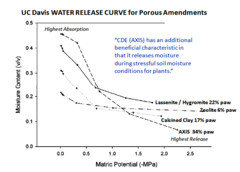
dale92539 Riverside Co SoCal
Original Author8 years agolast modified: 8 years agoWater Gradient Example
The volume of water held at each level of the container is listed.
Water is not distributed evenly; the container bottom is saturated while the top is drier.
The Total Moisture in a mix is the summation of the water amounts of the different zones from bottom to top. The PWT surface is 0KPa. Each cm section above this, is about 0.1kPa tension.Each inch section above this, is about 0.254kPa tension.
The amount of water in the mix section is derived from the % on the graphs at that tension multiplied by the volume of the cross section.
Addition: The PWT height is dependent on the actual distance between particles in the Medium. Since the shape of particles can vary, so can the PWT height vary per mix. The formula is for a constant distance in the medium.
PWT of Typical Potting Soil

dale92539 Riverside Co SoCal
Original Author8 years agolast modified: 8 years agoTypical Testing Setup for Moisture Release Characteristics
1 PSI equals 6.894757KPa, ( 0.145PSI per KPa)
Water 0.433 PSI per foot height (approx 3KPa/ft of water).
Edit: It is possible to make a simple device. Using PVC and using a Hand Air Pump to apply Pressures. One could test their 511 mix and Gritty Mix this way, If They wish too.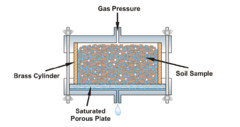
ewwmayo
8 years agoNobody else has commented on this yet, but I just wanted to say that water release curves are very helpful in understanding soil/watering.
A little abstract for some perhaps, but I have happily applied this in growing seeds/seedlings and my other plants.
dale92539 Riverside Co SoCal
Original Author8 years agolast modified: 8 years agoThere was not much to comment on, just for looking I think. There are many ways to apply the info.
1.) when using wicking under the containers, it shifts the % moisture content to the right along the curve at 0.1 KPa each cm height. lowering the total water holding capacity in the mix, and increasing the aeration. Plus moving the PWT to the bottom of the wicking material, away from the root zone.

2.) Looking at the graph , it also duplicates the moisture content thru the medium profile. Container bottom to soil surface. 1KPa per each 4" of height of soil mix or water column.
3.) Knowing the moisture tension, and setting a irrigation point.
dale92539 Riverside Co SoCal
Original Author8 years agolast modified: 8 years agoWater Tension, Pore Sizes, and Plant Available Water "PAW" for various Inorganic Materials.
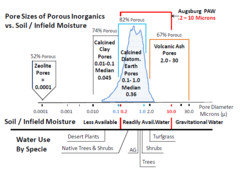


1 Bar= 100KPa (14.5psi) (about 1atm)
Permanent Wilting Point -15Bars, 1.5MPa, 1500KPa
Natural Soils hold water at higher tensions, than Potting soils. Plants have to work harder to extract water for native soils, than the soilless potting mixes. ( due to pore sizes.) The Tension in the center of a pore, should be equivalent to the pressure produced by column of water in a capillary of the same size. A film of water should follow the same rules using the distance from the particle in the equation.
Water Height cm= 1.47/Pore Radius mm or Pore Diameter/2
Example: 0.1mm pore
cm water= 1.47/(0.1mm/2)= 29.4cm high
KPa= 29.4cm*0.1KPa per cm= 2.94 KPa
dale92539 Riverside Co SoCal
Original Author8 years agolast modified: 8 years agoPWT Height from Previous post with addition
A perched water table exists in every container planting, only
the height varies with pore sizes ( i.e.Particle sizes). The Perched water table height is the same
height that free water would rise in a capillary tube, whose diameter is the
same as Soil Mix pore diameter. Even a 1 meter diameter pipe has a capillary
rise in the thousands of inches, but it is still there. The way
to eliminate PWT's as previously discussed, is with the continuation of
capillary pull under the container. ( Wicking, Pot in Pot, etc.)PWT Chart from
Cornell University Publication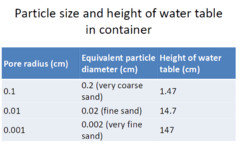
Following Formula:
PWT height(cm)=
1.47/pore radius(mm)PWT height(cm)=
1.47/(particle diameter(mm)/2)PWT height(in)= PWT
height(cm)/2.54Chart PWT Height(cm)
versus Particle Size(mm)Addition: The PWT height is dependent on the
actual distance between particles in the Medium. Since the shape of particles
can vary pore spaces somewhat, so can the PWT height vary accordingly per mix.
The formula is for a constant distance between particles in the medium.PWT meters= 1.48E-5/pore radius(meters)
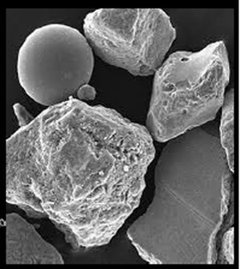
shawn b
8 years agodale great thread teaches ppl alot if they take the time to read.I understand some not all of it.But media has alot to do with plants.I mix my own media to stay organic instead of buying 1 mix and using it.This good for the organic gardener to know what to mix and experiment with to stay organic
dale92539 Riverside Co SoCal thanked shawn bdale92539 Riverside Co SoCal
Original Author8 years agolast modified: 8 years agoThe plants have a column of water from leaves to roots, all under tension. The pore under the leaves release water vapor to the atmosphere. Plants cool their leaves this way, by evaporative cooling.
The Tension on water in the medium comes mostly the Electrical forces between the particles and water molecules (Adhesive force),also between the water molecules themselves (cohesive force). The Force gets stronger the closer to particles you get ( as the water layer thins). The plant works harder and harder to get water as the tension increases. Keeping optimum range of tensions, helps the plant use its energy for other things. Osmotic Pressures from Salts in the soil water also increase the water tensions. This can increase to the point a plant will start wilting, even if water is present ( ie excessive Fertilizer concentration strengths,pulling water from the plant ). This why constant feeding with lower concentrations is preferred.
The charts are from The Sun Groer Newsletters. You can look at all the archives and signup for free at
http://www.sungro.com/category/sun-groer
The Moisture Release Article is in the Aug 2012 issue
Edit: Also as water tension increases the plant start to close the pores (stomata) under the leaves more. (reducing the level of Photosynthesis occurring).
Also the Formula below applies to water film thickness also
Tension(KPa)=( (1.48E-5/film thickness in meters)*100) *0.1
Example: Water at a distance of 10 microns(10E-6 meters) from a particle is at a tension of:
(1.48E-5/10E-6)*10= 14.8 KPa
penfold2
8 years agoVery interesting info. Though I was looking at the chart for misc materials (calcined DE, clay, etc), and I think I see an error that could cause some confusion. You wrote 1 MPa = 1000 kPa, but 1 MPa = 1000 Pa = 10 kPa. The MPa values should be multiplied by 10, rather than 1000, in order to compare them to the kPa values in the other charts.
Thanks for the info and links, though. I especially appreciated the above mentioned chart because I use mostly inorganic components, and most soil info focuses on primarily organic soils.
-Chris
dale92539 Riverside Co SoCal
Original Author8 years agolast modified: 8 years agoThanks for the response Chris. I developed the figures from various sources.
The term MPa is Mega Pascals ( 1e6 Pascals) and KPa Kilopascal (1e3 pascals).
10e6/10e3= 10e3.
Artificial media seems to plateau at about 10KPa with very little moisture available after this. I am assuming that the rest of the water is so tightly held that after 10KPa so little water becomes available all the way to 1.5MPa ( about 218psi)( Permanent Wilting Point in soils). Now I am interested in testing wicking materials to duplicate the effects of deep containers, using the small 2.5" deep seeding trays. Eliminating the PWT and adjusting the water/air ratios using less coarse growing medium( .5mm to 2mm) thru Water Tension adjustments.
Example:
Tension is about 1KPa for every 4" depth of growing Medium. The bottom of the container would hold about 70% moisture instead of the 79 to 80% (TP of Mix 79 - 80%) saturated condition of 0KPa. This gives 10% aeration at the container bottom.
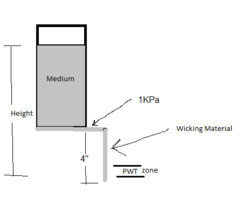
penfold2
8 years agolast modified: 8 years agoOops, you're right about the units. The thing that's confusing me is the discrepancy between the initial charts, and the chart for artificial media. The initial charts show steady water release up to about 5 kPa (give or take), and state a wilting point of 10 kPa or so. But the chart for artificial media shows most of the materials steadily releasing water up to about 700 kPa (0.7 MPa * 1000), and states the permanent wilting point tension as 1500 kPa (1.5 MPa * 1000). There seems to be about a 100 fold difference between the values in the initial charts, and those in the chart for artificial media. Am I missing something? I just want to understand how these artificial media compare to organic media.
-Chris
dale92539 Riverside Co SoCal
Original Author8 years agolast modified: 8 years agoSoils seem to release the water at higher tensions, due to the particles sizes, pore dimensions and more depth of water column that the earth can provde. Its like growing in a very deep pot of fine medium. Potting soils seem to act like a sponge, especially Peatmoss( internally stored water). As you squeeze a sponge, water is released with increasing pressure. Then a point is reached were you can't squeeze water out, but the sponge still feels damp. This is analogous to unavailable water.
Edit: Water should move downward in the earth, till a equilibrium is reached. The forces pulling upwards( capilliary and cohesive) equals the forces pulling downwards Gravity, and capillary forces at the bottom edge of water front.
dale92539 Riverside Co SoCal
Original Author8 years agolast modified: 8 years agoNew Device for measuring Water Release Rates
New Device for Water Release Measurements
Measuring Water per Depth
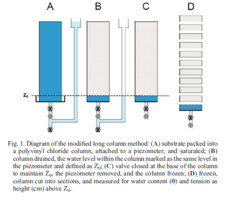
jy20thcent_5a
8 years agoThanks for a thought provoking thread. Checked out the additional water release curves via your posted links. The LECA was different from what I'd expected. But - wow - looks like roots would have a super-easy time getting almost all water present in rockwool.
Although not mentioned here and specific to their products, also found the attempt at an E-value (evaporation) measurement in the sun-gro docs stimulating, as I was recently thinking about how quickly various mixes dry for some plants growing not far from an active furnace - an unfortunate location with very warm and very dry air.dale92539 Riverside Co SoCal
Original Author8 years agolast modified: 8 years agoPeat Moss: Pumice (1:1) Medium
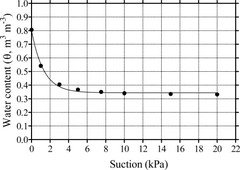
Soilless Mix Materials Water Release Rates
Low Tension Water Sources (0-5KPa): PeatMoss, Bark, Coir ,Pumice( with large pores).
Water Buffering Sources(10KPa-1.5MPa): Release water at
higher tensions, act as water reserve Calcined DE, Calcined Clay. Calcined DE
has about 34% Plant Available Water(PAW), and Calcined Clay about 17% PAW( also
higher tensions than DE). Possible custom mixes of DE and Clay for release
patterns desired.Soil Moisture Retention Curve

westes Zone 9b California SF Bay
6 years agoIf we want our soil mix to water the root zone at 5 kPa or less, does that imply that the root zone must be within 20 inches of the top of the PWT? The numbers you gave were 1 kPa = 3.94 inches, so 5 kPa = 3.94 in/kPa * 5 kPa = 19.7 in ~= 20 in
I am assuming that Turface would be like Calcined Clay? How can that have such poor moisture content at 1 kPa compared to fir bark and pumice when in ewwmayo's thread he show's [Turface beating bark and pumice[(https://www.houzz.com/discussions/porosity-water-holding-capacity-cost-of-common-soil-components-dsvw-vd~4061703) in moisture retention? Where am I disconnecting on this?dale92539 Riverside Co SoCal
Original Author6 years agolast modified: 6 years agoJust saw the Post, Its been awhile since this was posted. The Curves can be interpreted many ways. They are usually generated with a pressure chamber. The Medium is Saturated 0 KPa, then various Air Pressures are applied and Water Amounts are Measured, based on weight loss of the Medium. Also Curves are interpreted as the Tension ,that Water is held by the medium, at a Specific Moisture Content. After Irrigation Water Content will vary through the vertical Profile of the Container. Water is held in the Pore Spaces (Internal or External) of the Substances. Some Materials have a greater internal Porosity. Also the Particle sizes of the Mixes, Plus Container Height, all influence the Results. I am not a Fan of Turface, I use Pumice.
Moisture tension in pots, Standard UC Mix of Bark, Peat, Sand
http://lieth.ucdavis.edu/Research/tens/98/SmtPub.htm
dale92539 Riverside Co SoCal
Original Author6 years agoCalcined Clay or Turface is OK, if you want to use it. Mostly used in Bonsai Mixes. Calcined DE has better WHC. Gritty Mixes used more for very Shallow Containers, Such as Bonsai etc. Reference Article
Life without Turface
https://crataegus.com/2013/11/24/life-without-turface/
westes Zone 9b California SF Bay
6 years ago@dale92539 I read that Crataegus article a while ago, and I have never seen another article confirming that, and I have read from a lot of growers contradicting that. Turface for me has worked great. It is a huge reservoir of water, never breaks down, and the roots of the plants I have used with it grow into it readily.
dale92539 Riverside Co SoCal
Original Author6 years agolast modified: 6 years agoOak Seedlings in Peat/ Perlite 50/50, screened to remove 1mm or less particles , with 30ppm N weekly Fertigation at 3-1-2 ratio, with 40ppm Magnesium from Epsom Salts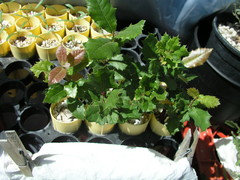
I have been away from Plant Propagation for awhile. Most Professional Forestry/ Conservation Nurseries, use a Mix of 50/50 Peat/Vermiculite or Peat/ Perlite. I use 1/1 to 1/2 Peat/ Perlite or Pumice for most all plants. Plus use Tree Conetainers for Growing.
Nil13 usda:10a sunset:21 LA,CA (Mount Wash.)
6 years agoTurface and pumice are two completely different materials. I don't know anyone arguing for 100% Turface. That would be crazy and then I would agree with that Crataegus post. Used as a part of a mix, especially pumice, it works great. That bit about hydrophobicity in that link is nonsense though. Turface does not get hydrophobic. What happens is the top layers soak up all the water before it gets to the lower layers and then channeling makes it look like there is a hydrophobic area. But if that were really the problem then you wouldn't get easy almost instantaneous wetting from submersion. You would have the hydrophobic peat block effect instead.
tropicofcancer (6b SW-PA)
6 years agoI have found that turface has a lot of variability in water retention, particle shapes and size from batch to batch. I think it has to do with a combination of the variability in clay composition and firing temperatures. Some batches feel like hard ceramic (probably too high firing temps) and have much less water retention. Some other batches are softer (probably temperature did not reach as high uniformly in a large batch). These softer ones are still durable and lot more porous.
I got hold of a bag of Pro's Choice calcined clay that has a lower bulk density than turface. I am hoping it has better and more uniform water retention capacity. Will see. I was also told by the distributor that manufacturers of infield soil conditioners like turface also tend to produce differently formulated products (under same name) for different parts of US. May be has to do with local weather conditions.
Bonsai jack gets its specially formulated turface from Profile that has been fired at a lower temperature. They cannot call it turface though. The info is on their website. I bet their product is more suitable and more consistent for soil mixes.
I have used 100% turface and many others for small sized bonsai pots. They are quite suitable for say ficus, that are adapted to natural wet/drought cycles. I have a P. afra too and it is happy as a clam. Have to be more careful with watering and cannot keep the plant in full sun for all day.
Pumice is very expensive here. Otherwise I would have used it more extensively by itself or mixed with turface.
tropicofcancer (6b SW-PA)
6 years agoBTW, dale thanks on your writings on water release curves. Very informative and useful. It balances our obsession with water retention issues very well.
dale92539 Riverside Co SoCal
Original Author6 years agolast modified: 6 years agoPumice/Perlite is available in my area, I use Dry Stall, purchased at local Feed Stores. I have used Oil Dri, or High Fired Cat Litter in small amounts. Turface is not worth the price in my experience. Sand is the best growing medium, just heavy, and frequent irrigation is needed. I have come to the same results as Gary at Laguna Hills Nursery on Growing Mediums.
WHAT IS PERFECT SOIL?
dale92539 Riverside Co SoCal
Original Author6 years agoGood Resource from free Nursery Manuals covering Soilless mixes, and Growing in General https://www.rngr.net/publications/nursery-manuals
westes Zone 9b California SF Bay
6 years ago@dale92539 Is there any way we can calculate our own water release curves, without using a device like the one you draw in this thread? Did you draw all of the ones you listed, or were those taken from another reference?
I am still trying to compare peat against Turface, and it is very hard for me to understand the Turface graph you drew and how to compare that against the peat graph.
westes Zone 9b California SF Bay
3 years agoWhat I don't understand about water release curves is why they only seem to care about pressure changes. Isn't it equally important to know how long a given substrate will hang onto its water over time? That might depend on heat, humidity, and other variables, but those could all be stated in order to produce a time decay graph.
westes Zone 9b California SF Bay
3 years ago@dale92539 What particle sizes are you using for your sand?
soultouch
3 years agoYour posts are like a 1 stop shop of the best explanatory graphics and information I have come across. Could you tell me the particle size of the pumice and type [source] you are using. i am getting a hold of some pumice from Malad Idaho which seems to be special. Also, there are local zeolite mines in the area. I have already done some testing, it has high water holding and air capacity at free drainage but now i will build a DIY setup to perform a moisture release curve. What a reference. Had balked at buying some Axis DE because of the price, but your MRC make a believer. I have tested some uncalcined DE, gets a little mushy but high water holding and decent airspace around 20 % Super cheap Blue Ribbon Kitty litter from a Dollar Tree for pounds
soultouch
3 years agowestes Zone 9b California SF Bay,
Remember it is really Tension [reverse pressure actually] no way to really know the time it takes unless you are testing an actual crop in an actual known container size and tracking the time between waterings when a tensionometer or similar sensor and controller switch turn the thing back on. As the plants grow larger the time to reach 5KPA or 50% water will shorten drastically. this is simply why the pressure or tension is measured After many years of testing it was found that water from 0 to 5 Kpa was EASY Water so the pressure device allows one to simulate the same effect. Knowing how much water is left is easy. Water weighs 1 gram per CC so if you have an Oven Dry soil that you weigh and then saturate, and then weigh again the weight difference is also equal to the volume of water you have added. Actually saturated is useful info but what you really want to know is the wieght at Container Capacity or Field Capacity if the soil is in the field. Container capacity is super easy, Air and water space are calculated after the soil FREELY Drains. In soil labs this may be a standard time overnight, but in a practical situation in a greenhouse. 10 to 20 minutes after you water is easily accurate enough. After subtracting the tare weight of the container used
Saturated Weight - Oven Dry Weight ODw = Total Porosity aka TP
TP = MicroPore + Macropore Micropores is the water holding and Macropores = Air Space or AFV Air Filled Volume
Saturated Weight - Container Capacity weight CCw = AFV
Water Holding Capacity or WHC aka Micropore Volume = ODw-CCw
These are very simple measurements which one can determine the Airspace and WHC of any growth media substrate but average AFP aka AFV will always increase with container height and Average Water Holding Capacity will always decrease with container height [or more correctly with increasing media height which in practical terms can not be taller than the rim of the container] See his great pics on water volume bands in a container etc above
What none of these easy measurements tell you is how much of that water will be available. I personally shoot for media with high AFP and just water more frequently because a lot of plants dont like wet roots. From this info i can see that i really want to check out the Axis DE product which is a calcined Diatomaceous earth
As pointed out above some growers use a hanging capillary mat to lower the perched water table in a container plant. i have seen some use shoe laces running through the drainage holes falling over the edge of a bench to perform a similar effect
dale92539 Really first rate material, i now have been reminded of how to really do a moisture release curve and what it really meansUser
3 years agoOne question I have is how the difference in wicking works. This is something I've argued with other users and, frankly, doesn't make sense to me.
If we use a wick of--just as an example--a single cotton hair, it's unable to alter the pressure by 0.1 kPa. One of the entire size of the base of the container, as long as it has the same moisture holding capacity of the stratum, would change the pressure accordingly, of course. It's cliché to say, of course...but size really does matter... :-)
(I say that one as a candle maker, where wick sizing is a crucial and revoltingly mathematical element, and often the difference between a candle and a dangerous insurance invoking disaster).
"1.) when using wicking under the containers, it shifts the % moisture content to the right along the curve at 0.1 KPa each cm height. lowering the total water holding capacity in the mix, and increasing the aeration. Plus moving the PWT to the bottom of the wicking material, away from the root zone."tropicofcancer (6b SW-PA)
3 years agoSince we have met before and argued about this in another thread:
This thread is 2 years old and dale has not been active since or at least I have not noticed him return to the site elsewhere either.
To me it is increasingly clear that you are still confused about the nature of PWT. Just like the height of PWT does not depend on the width of the container (only on the media composition) so does width of the wick is immaterial. Remember pressure is force per unit area. So a thin wick will exert the same pressure downwards whether it is thick or thin. The time it takes to drain the water away is of course dependent on the width since cross sectional area is larger. I am sure the same applies to sizing candle wick.
User
3 years agoTo me, it's increasingly clear that you are still confused about the water retention curves above and what they mean. Remember, that's also a force retaining the water in the soil.
And of course, I remain unconvinced (after testing with wicks here since I certainly have plenty) that wicks actually draw much more water away than gravity alone. The resulting water in the pan is within a few grams of the water that would be there anyway.
I'm naturally going to assume one is absolutely perfect about emptying the pot before rewicking back into the soil occurs because, personally, I wouldn't be.
And further, that it actually matters and one actually needs to wick water away in any case where one wouldn't simply use a soil with less water retention. This is the argument I actually find extremely dubious in the first place, but we'll let it go for the sake of argument.
I asked to get clarification from somebody was, well, not you (I threw you two red herrings in my latest post; you found one, you didn't find the other and it was pretty blatant. When I sent your reply off to a friend of mine who's a physics professor, he had some rather unkind things to say that I didn't, of course, post because I'm not some other posters around here.tropicofcancer (6b SW-PA)
3 years agomorpheuspa: I asked to get clarification from somebody was, well, not you (I threw
you two red herrings in my latest post; you found one, you didn't find
the other and it was pretty blatant. When I sent your reply off to a
friend of mine who's a physics professor, he had some rather unkind
things to say that I didn't, of course, post because I'm not some other
posters around here.I have no idea what you are talking about.
morpheuspa: When I sent your reply off to a
friend of mine who's a physics professor, he had some rather unkind
things to say that I didn't, of course, post because I'm not some other
posters around here.Please do not hold back. I want to see a nasty response from a Physics professor. If you have the courage please name him and his university too. You know full disclosure is important.
morpheuspa: To me, it's increasingly clear that you are still confused about the
water retention curves above and what they mean. Remember, that's also a
force retaining the water in the soil.Of course, there is a force retaining the water in the soil. That is the whole point here. If you water a medium to complete saturation to the top and let it drain and let it come to equilibrium then you will have two zones in the soil. A lower zone that is completely saturated - a zone where all air space is filled with water. And an upper zone that is not 100% saturated. The boundary is the )Kpa tension. The height of this boundary is the height of PWT. If undisturbed then this saturated zone will remain saturated for ever.
Above this zone water is still present within the particles and as a film surrounding the particles. But it is not 100% saturated - meaning there is some air space also between the particles. As go up towards the surface the film of water keeps reducing and air space keeps increasing. This is what is captured in the water release curves.
Depending how tightly soil particles hold on to water, the release curves are different. Peat has a higher affinity for water and so a larger (taller really) zone above the PWT that can hold substantial water but not fully saturated. Bark on the other hand has a lesser affinity for water so holds much less water at the surface and rapidly comes close to being dry as move up from the 0Kpa boundary.
Water release curves, in short, describe how easy or difficult it is to extract that water from the soil particles. Below the 0Kpa boundary there is a lot of free water (unbound and bound) and above it is only bound water.
Adding a wick to the bottom of the pot moves the bottom soil/air boundary lower. Water above the wick is under positive pressure to move away from the soil. The wick extends the soil bottom boundary causing a reduction in pressure in the water column above. Thus it moves the 0Kpa boundary lower. If the wick is long enough this boundary can be moved below the pot. Thus effectively removing the saturated zone in the soil medium. The water release curves do not directly address this but does so indirectly. The key is that the wick extends the bottom boundary to a lower point.
Many of the subtleties of what I am saying has been presented by Dale in this thread with good diagrams and explanations. I encourage you to go through them again.
I welcome and encourage you to send this entire thread including my explanation to your Physics professor friend. In many threads you have boasted about your scientific prowess. I do not doubt that. I tend not to do that but instead try to explain the best I can. But do not under estimate my background. So keep it to logical explanations and if I am wrong I will gladly admit it.
User
3 years ago"I have no idea what you are talking about."
That is regrettable. Equally regrettably, above you simply opened with a knock at my own inability to understand without any explanation and then continued on with...that...below, where a one- to low-thread wick moves a boundary appreciably compared to, say, a 15" pot.And no, I don't have his permission and won't ask. You just asked me to dox somebody online. I'd possibly think about asking around the time you send me your name, place of work, and full address in the open, so the answer on that would be a no even at that point.
As I mentioned, I was looking for input from somebody else, preferably with testing results as opposed to walls of text that mean little in the experimental (or, real) world. So far, that hasn't happened. Hypotheses are nice. Proof and results are what matter. If your background is any good, you should already know that.
User
3 years agoSo no proof but plenty of dismissiveness and a demand to dox a person who's then assumed to be a unicorn Alrighty then. I'm writing this off as a garden myth and those who perpetuate it as wrong based on actual data--as compared to the lack of data that has never been presented.
"No one goes around collecting data on things that are mere extensions of existing knowledge"And with that, you have proven you have no science qualifications, because that's how science expands. I would strongly advise that you do "leave [me] alone" in the future. Things are not done by assumption, attitude, yelling, dismissiveness, and groupthink. They're done by experiment and compilation of data.
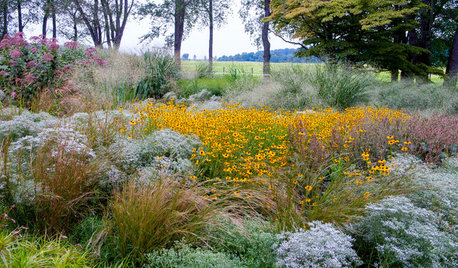



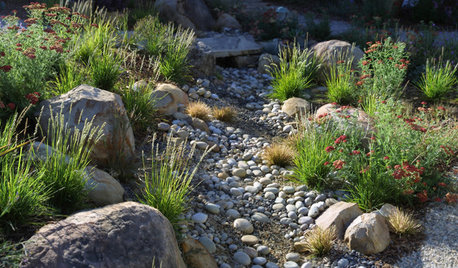
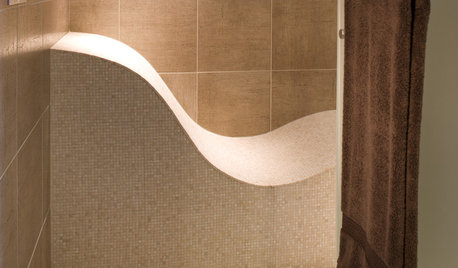

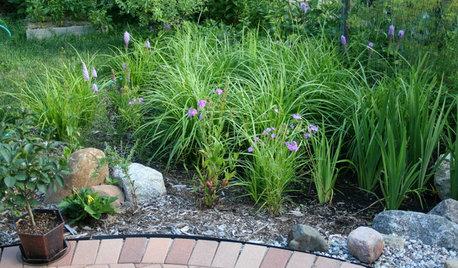
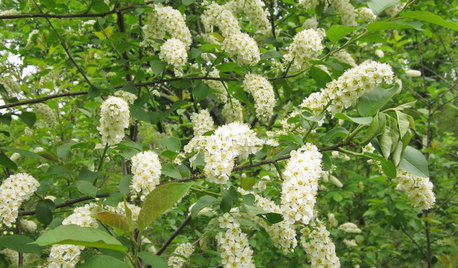









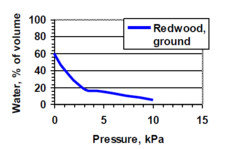
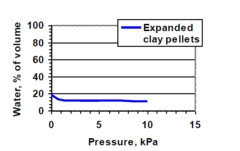


tropicofcancer (6b SW-PA)